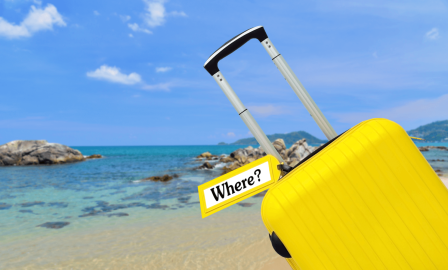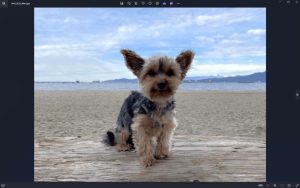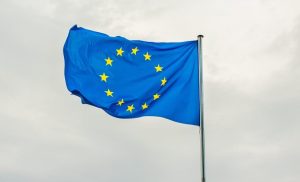What can social data tell us about trends in the hospitality industry? Columnist Chris Kerns dives into the summer’s social travel data and comes away with three main patterns that marketers can learn from.
 If you’re beginning to see fewer and fewer vacation photos in your social streams, you’re not alone. As the summer winds down, so does the busiest time of the year for travelers, airlines and hotels.
If you’re beginning to see fewer and fewer vacation photos in your social streams, you’re not alone. As the summer winds down, so does the busiest time of the year for travelers, airlines and hotels.But the season passing doesn’t mean the learning stops with the first fall leaves: Social media teams have spent the past few months trying their best to attract and engage an audience seeking new adventures — and that audience is ripe with data that marketers can learn from.
I dove into the data behind this summer’s social travel patterns and found that the seasons aren’t the only thing changing — travelers’ expectations and habits are changing as well.
What can social data tell us about changes in the hospitality industry thanks to the shifting needs of a social traveler? And what can all marketers learn from these patterns as more and more consumers and brands continue to connect on social media every day? Grab your passport, and let’s explore the data.
I dove into branded and non-branded social travel content from both Twitter and Instagram, searching for travel influencers, airline and hotel brands, and everyday travelers sharing details about their trips. Three main patterns emerged from the data.
1. Travel influencers are changing the content game
Content creation for travel and hospitality brands has traditionally been filled with imagery showing off the sights, accommodations and benefits of picking one brand over another. But social media, combined with new generations that favor experience over prestige, has created new influencers who often showcase different approaches to sharing their experiences.
What can larger brands learn from their tactics?
Let your audience see themselves in the scene.
Chris Burkard is a travel photographer who takes breathtaking shots; he sees a 2.8-percent engagement rate (higher than most travel brands I analyzed) on his content. This has helped him to build a following on Instagram that is 1.9 million followers strong.
His photos not only feature amazing landscapes, but they usually include people in them as well — hiking, kayaking or just enjoying the scenes around them. This allows the audience to see themselves in the adventure, even if they are sitting at home on the couch.
Make your content the same, but different.

Murad Osmann has created an ongoing Instagram photo series featuring his wife, Natalia, showcasing the local culture in dress, style and location. Each image has a familiar pattern but is different enough every time to engage his audience, building a 4.4-million Instagram following and an out-of-this-world 4.3-percent engagement rate.
Go lo-fi.
In 2011, Foster Huntington decided to leave his job and drive around the US in a camper. Since then, his no-filter approach to imagery and behind-the-scenes look at his lifestyle have made his content stand out from the rest of the highly polished crowd, earning him over one million Instagram followers in the process.
2. Traveler expectations are on the move
Each and every season, customer expectations for a quick social response are on the rise. The days of your audience shooting off a tweet to a brand and hoping for a note back are over. Today, consumers demand a quick response and resolution to their issues via social media.
Last year, I wrote a Marketing Land article on the rise of 1:1 marketing. When running the numbers for 2015, I saw the percentage of brands’ Twitter content written to single individuals steadily increasing, quarter over quarter.
When I pulled some fresh data this month for 2016 — particularly for the travel industry — I saw those numbers continue to rise.

In the 2015 study, airlines saw the highest percentage of replies of any industry, at 98 percent of their Twitter content, and now in 2016, that number has hit 99 percent fairly consistently each month to date.
When we look at hotel brands, we see this number increasing this year as well. In January of 2016, the 1:1 percentage for hotel brands was close to 88 percent; by July of 2016, that number had risen to 91 percent.
This increase in one-to-one social communication between brands and consumers isn’t coming out of the blue; it’s a response to growing customer expectations on social. The channel is increasingly used by consumers to ask for help, advice and troubleshooting — all without having to pick up a phone.
It’s becoming clear that a well-planned social customer care strategy is a necessity for all modern brands, and this reality continues to grow as the use of social channels increases.
3. Travel engagement opportunities are a round-trip ticket
While more and more brands are responding to social audience outreach, more sophisticated social teams are taking the practice one step forward. The combination of a strong, data-driven strategy for identifying potential customers with tactics to surprise and delight them can equal a great lead generation strategy for travel brands.
@DWPassports We have recommendations in #Honolulu! If you’re heading to the North Shore, Waimea Bay has amazing v… https://t.co/SfRIFYGLSg
— Hilton Suggests (@HiltonSuggests) May 3, 2016
Using social discovery platforms, brands can seek out travelers crowdsourcing recommendations for their next destination.
@GoatsOnTheRoad We highly recommend it! If you ever visit our north coast we have the perfect itinerary for you:
https://t.co/g7ygyWls7a
— Discover Ireland (@DiscoverIreland) February 24, 2016
It’s a great way to seed ideas with travelers before they even jump on the plane, beginning a longer conversation with the audience that builds anticipation for the road ahead.
The next leg on the social road
Advances in technology will always change the demands on marketers, but along with new processes and workflows, there are also always opportunities. Modern marketers understand that while social might change how they approach content, customer response and audience outreach, getting ahead of those trends can result in real benefits to the bottom line.
Don’t be afraid to look to social signals to test new tactics and keep your efforts relevant and effective — even if the landscape looks different today from the way it did the day before. After all, aren’t the best trips those that you don’t, or can’t, quite plan for — and that leave room for the kind of surprise that made you step out the front door in the first place?
Some opinions expressed in this article may be those of a guest author and not necessarily Marketing Land. Staff authors are listed here.
Marketing Land – Internet Marketing News, Strategies & Tips
(91)
Report Post








